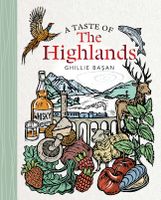Label
All
0
Clear all filters
🔥 Try our grilling cookbooks and save 25% on ckbk membership with code BBQ25 🔥
Nettles
Appears in
Published 2021
Anyone with a garden or a shed in the Highlands probably battles with nettles and finds them a nuisance as they just love a bit of compost or dung, especially around old barns and derelict buildings. They also love rain, damp ground, shaded areas amongst ground elder, long grass and wild flowers and they spread vigorously. But humans have been living companionably with nettles for a very long time and, if we treat them as friends, they are useful. They can be used to make a nutrient-rich fertiliser for your vegetables; they have been used to make clothing, storage sacks and sheets; my son strips the stems to make cordage for tying and sewing. They are rich in iron and vitamins A and C; the young leaves which are not so stingy and have not yet turned bitter are delicious pounded into pesto, whizzed into a piquant sauce, used like any other greens in soups and stews, and delicious on their own in a beautiful green, puréed soup. The Highlanders used what they had and most crofters and farmers would have had nettle patches that they used for practical, medicinal and culinary purposes. Regarded as a green vegetable they were added liberally to bowls of brose and to broths cooking over the fire.
Part of
Advertisement
Related Recipes
-
-
-
-
Related Reference
-
-
-
-
Advertisement
The licensor does not allow printing of this title



